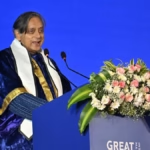
Rajya Sabha proceedings are underway during the Monsoon Session of the Parliament, in New Delhi. File.
| Photo Credit: ANI
The four Rajya Sabha seats from Jammu and Kashmir will remain vacant during the Vice Presidential election.
The members of Parliament from both the Houses will elect the 17th Vice-President on September 9.
Also read | NDA leaders authorise PM, Nadda to pick alliance candidate for Vice-President
The four seats from the Union Territory are vacant as the Election Commission has so far not held biennial polls to fill up the vacancies nearly 10 months after Assembly elections were held in Jammu and Kashmir.
MLAs elect Rajya Sabha members of their respective States.
The Union Territory has been unrepresented in the Upper House of Parliament since February 15, 2021, the day when Ghulam Nabi Azad and Nazir Ahmed Laway finished their terms. Two other members, Fayaz Ahmed Mir and Shamsheer Singh Manhas, had completed their terms on February 10, the same year.
Jagdeep Dhankhar, who was elected as the Vice-President in 2022, quit on July 21, citing health issues. His term was till August 2027.
The Vice-President is elected by the members of the Lok Sabha and the Rajya Sabha, with nominated members of the Upper House also eligible to vote. At present, there are no nominated members in the Lok Sabha.

The 543-member Lok Sabha has one vacant seat — Basirhat in West Bengal — while there are six vacancies in the 245-member Rajya Sabha. Of the six vacancies in the Rajya Sabha, four are from Jammu and Kashmir, and one each from Punjab and Jharkhand.
The seat from Punjab fell vacant after AAP leader Sanjeev Arora quit following his election to the State Assembly in a recent bypoll.
The demise of JMM leader Shibu Soren has created a fresh vacancy in the Upper House from Jharkhand.
The effective strength of both the Houses together is 781 and the winning candidate will require 391 votes, considering that all eligible voters exercise their franchise.
In the Lok Sabha, the BJP-led NDA enjoys the support of 293 of the 542 members. The ruling alliance has the support of 129 members in the Rajya Sabha, which has an effective strength of 240, assuming that the nominated members vote in support of the NDA nominee.
Thus, the ruling alliance has the support of around 422 members.
Article 66 (1) of the Constitution provides that the Vice-Presidential election shall be held in accordance with the system of proportional representation by means of the single transferable vote, and the voting at such an election shall be by secret ballot.
In this system, the elector has to mark preferences against the names of the candidates.
The Vice-President is the second-highest constitutional office in the country. He serves for a five-year term, but can continue to be in office, irrespective of the expiry of the term, until the successor assumes office.
Published – August 10, 2025 05:08 pm IST












